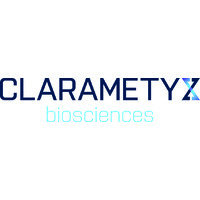COLUMBUS, Ohio– Clarametyx Biosciences Inc., (“Clarametyx”) a preclinical stage biotechnology company developing targeted, immune-enabling biologic therapies to counter serious infections associated with biofilms, today announced the publication of a new study in the prestigious journal CELL providing critical new insights about the components within bacterial biofilms that drive resistance to current medicines.
Bacterial biofilms are communities of bacteria embedded within a protective matrix that are associated with nearly 80 percent of bacterial infections. Because biofilms contribute to persistent infections, inflammation, and resistance to therapeutic interventions, there is a pressing need for novel strategies to combat this bacterial defense mechanism. Prior research has demonstrated that an extracellular DNA (eDNA) network stabilized by DNABII proteins are required for the structural integrity of biofilms across many bacterial pathogens. While enzymes that digest DNA can prevent biofilm formation, these enzymes are ineffective against biofilms that have fully formed.
This research initiative aimed to understand the development and maturation of the biofilm to elucidate its resistance to the innate immune system. A series of studies indicated that the biofilm structure is not built on the typical B-form of DNA, but instead relies on the rare Z-form of eDNA, which accumulates as biofilms mature and provides structural integrity to the biofilm’s matrix. Importantly, the assessments found Z-DNA to be the primary structural form of eDNA within mature biofilms across a range of bacterial pathogens, including Escherichia coli, Klebsiella pneumoniae, and nontypeable Haemophilus influenzae, each of which contribute significant patient burden today. These findings suggest that the development of therapeutic agents designed to drive biofilm eDNA back into its native B-form could enhance the prevention or clinical resolution of biofilm-mediated diseases.
“This seminal publication answers a critical piece of the biofilm puzzle by articulating the central role of Z-DNA in the pathogenesis of the biofilm and its resistance to immune intervention,” said Steven Goodman, Ph.D., study author, Director of the Oral GI Microbiology Research Affinity Group in the Center for Microbial Pathogenesis at the Abigail Wexner Research Institute (AWRI) at Nationwide Children’s Hospital and co-chair of the Clarametyx scientific advisory board. “This improved understanding of the key contributors to biofilm development and defense will transform research efforts to overcome the mature biofilm and prevent its development.”
“The publication of our research in the globally renowned CELL journal validates the significance of this finding to the research community trying to solve the challenge of persistent bacterial infections and antimicrobial resistance,” said Lauren Bakaletz, Ph.D., study author, Director of the Center for Microbial Pathogenesis and Vice President of Basic Sciences for AWRI and co-chair of the Clarametyx scientific advisory board. “That the Z-form is the primarily form of eDNA found in mature biofilms provides a vital insight into how we approach the biofilm. If we know what to target, we can efficiently dismantle the eDNA structure, rendering the bacteria much more vulnerable to immune or antibiotic intervention and resolving infections more efficiently to improve patient outcomes while also reducing the risk of antibiotic resistance.”
“A more sophisticated understanding of the role of the molecular components that strengthen the biofilm and protect the bacteria is critical in our design of novel therapeutics and vaccines that could benefit many people who contract a wide range of severe bacterial infections,” said Charles McOsker, Ph.D., co-founder and Chief Scientific Officer of Clarametyx. “This invaluable research not only reinforces the central scientific strategy we are pursuing at Clarametyx but also informs the ongoing development of our CMTX-101 novel anti-biofilm antibody therapy that could transform the treatment of bacterial infections by disrupting both newly-formed and mature biofilms.”



